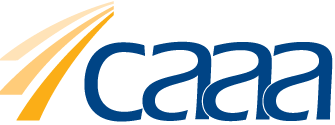
The Federal Treasurer, Mr Josh Frydenberg, handed down the 2021–22 Federal Budget at 7:30 pm (AEST) on 11 May 2021.
The Australian economy has recovered faster than expected from the COVID-19 recession, with the budget presenting a deficit of $161 billion, which is $52.7 billion lower than expected.
Focusing on recovery, the budget this year outlines measures to support business and individuals with enabling more people to get back into the workforce, incentives, tax cuts and superannuation changes as the virus maintains a threat to the economy.
Other key changes include benefits for parents. The childcare subsidy will be increased to a maximum of 95% from 1 July 2022. For families with more than one child in childcare, the level of subsidy received will increase by 30% to a maximum subsidy of 95% of fees paid for their second and subsequent children.
For those with relatives in aged care $17.7 billion will go toward improving Australia’s aged care system namely in the areas of home care, services and sustainability, quality and safety, workforce as well as governance.
Below is a summary of the key measures, the full Budget papers are available at www.budget.gov.au
Budget Highlights
Individuals
- The low and middle income tax offset, available to taxpayers earning less than $126,000 per year, will remain for the 2021–22 income year.
- Individual tax residency rules to be simplified under new framework.
- The current limitation for claiming a self-education expense, where the first $250 of the allowable deduction is denied, will be removed.
- CPI indexed Medicare levy low-income threshold amounts for singles, families, and seniors and pensioners for the 2020–21 year announced.
- A full income tax exemption for pay and allowances of ADF personnel deployed to Operation Paladin from 1 July 2020.
- Funding to increase home ownership, support jobs in the residential construction sector and enhance housing data.
Business
- Temporary full expensing of eligible assets will be extended by 12 months to 30 June 2023. This means businesses can purchase new equipment and deduct the cost from their profits.
- The temporary loss carry back offset will be extended by one year, allowing companies to offset previously taxed profits as far back as the 2018-19 income year.
- Extended powers for AAT to pause or modify ATO debt recovery action for small business taxation decisions. Applying to the AAT instead of the courts will save small businesses at least several thousands of dollars in court and legal fees and as much as 60 days of waiting for a decision.
- The Government will increase the threshold at which creditors can issue a statutory demand on a company from $2,000 to $4,000, helping to prevent viable companies from being pushed into liquidation over small debts.
- The cessation of employment taxing point will be removed for tax-deferred employee share schemes that are available for all companies.
- A refundable tax offset for investing in qualifying Australian games expenditure will be introduced from 1 July 2022 to attract some of this billon dollar business to Aussie shores.
- Taxpayers with certain intangible depreciating assets will be given the choice of using the statutory effective life or self-assessing the decline in value from 1 July 2023.
- Income tax exemption for qualifying grants made to primary producers and small businesses affected by the storms and floods in Australia.
- A new early engagement service will be implemented to assist foreign investors and give them confidence to invest in Australian businesses.
- The corporate collective investment vehicle tax and regulatory framework will be finalised with a revised start date of 1 July 2022.
- Technical amendments will be made to the taxation of financial arrangements rules, which will include facilitating access to hedging rules on a portfolio-hedging basis.
- The heavy vehicle road user charge will be increased from 25.8 cents per litre to 26.4 cents per litre from 1 July 2021.
- The Boosting Apprenticeship Commencements wage subsidy will be expanded.
Superannuation
- Superannuation guarantee exemption for employees earning less than $450 in a month will be removed. From July 1, the compulsory super guarantee is increasing from 9.5 per cent to 10 per cent. They will be increasing in half a percentage point at the start of each financial year until it reaches 12 per cent by July 2025.
- From 1 July 2022, individuals aged 67 to 74 will no longer be required to meet the work test when making or receiving non-concessional superannuation contributions or salary sacrificed contributions.
- From 1 July 2022, the eligibility age to make downsizer contributions into superannuation will be reduced from 65 to 60 years of age.
- The maximum amount of contributions that can be released from superannuation under the first home super saver scheme (FHSSS) will be increased from $30,000 to $50,000 from 1 July 2022.
- Technical amendments will be made to the first home super saver scheme (FHSSS) legislation to improve its operation and assist those who make errors in their FHSSS release applications.
- The central management and control safe harbour test for an SMSF to be considered an Australian superannuation fund will be extended from 2 years to 5 years.
Home Buyers
- The deposit required to purchase a home will be reduced to 2%. Under the new plan starting in July, a single parent can buy a $500,000 home with deposit of just $10,000.
- $774.8 million over 2 years from 2021–22 for the HomeBuilder program to extend the construction commencement requirement from 6 months to 18 months for all existing applicants.
- Extending the first home loan deposit scheme to provide an additional 10,000 new home guarantees in 2021–22 to allow eligible first home buyers to build a new home or purchase a newly constructed home with a deposit of 5%.
If you would like to discuss how these changes may affect you and your financial situation please get in touch with your advisor today.
